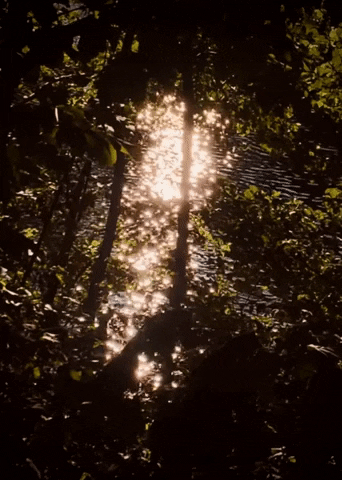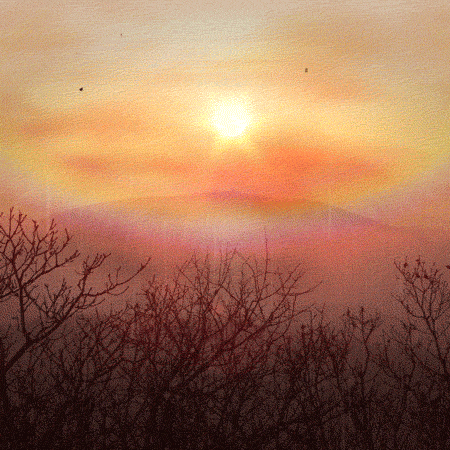
A Gift from Reinhardswald
Spencer Greenfield
“Nature does not work on the principle of sameness, uniformity, and monocultures. The natural world is a constant striving for a diversity of expression. Diverse ecosystems give rise to diverse life-forms and to diverse cultures…” – Vandana Shiva
*
I sought out the perfect tree. This is a tale from a time long ago and a place far away, you see. None of those portable electronic do-hickeys had taken over the land and you could find some goddamn peace and quiet every once and a while…
I digress. Yes, I was in search of the perfect tree, a gift for my beloved who always stopped and smelled the roses a little more than I… may God rest her soul… oh, she was brilliant you know, she grew up on the barley fields in Hesse…
Sorry… the story? Which story? My beloved, you say… a gift? Yes, my sincerest apologies, let me begin…
I walked from the city into Reinhardswald forest where the stories of monsters loomed along with the branches crowding the sky above. It was beautiful — an early May morning, and I had nothing except for the clothes on my back and a small knapsack.
The birds greeted me in song as I walked through an old path carved through their woody watchtowers. The trees were thick and gnarled from time. Oak and beech leaves interlaced in dewy shades of green. It was somewhat pristine, the constant presence of ancient trees mixed with patches of leafy shrubs and flowering weeds. It was so old it was nearly ageless, capable of immortalizing her beyond the capacity of my own memory.
I had no timepiece on me, so I tried to keep time by the number of my steps. To no surprise I quickly lost count. The path started thinning, and the undergrowth breached the tenuous line that separated the dirt trail from the wilderness surrounding me. A tree trunk, 10-feet wide, sat on the right edge of the trail just ahead and blocked my view of what laid beyond. It snapped me right out of my trance. I swiveled my head left. Right. My gaze fixed on a small gap in the ferns and ivy just behind the massive pillar of wood. I set my eyes on the unknown and stepped off the trail.
Very soon I was forced to slow down to a crawl. I breached my way through carpets of trunks, and ivy making my otherwise linear progress look more like a maze. I looked back: the world was a sea of green. I was lost.
*
“Once growing space is fully occupied, intense competition occurs among existing trees, generally excluding new cohorts. This stage is referred to as the stem exclusion stage” (Camp & Oliver, 2004).
*
After a long… very long… stretch of time, a particularly dark shadow caused me to look up. There was a tree larger than the others I had come across. In this part of the woods, the trees were uniform: thin oaks and a few crabapple trees once again dotted my vision. Gone was the magnificent tree that caused me to veer off my course. But the tree above me, it had branches twisted in impossible angles that stretched out from just above my head. Knots peppered the trunk, and the branches divided themselves exponentially as one trunk split into three split into ten. She would have marveled at its complexity. At this I could feel my heart pulsing against my rib cage and I betrayed my very own equanimity as I let out a deep, deep moan. My voice got caught in my throat. I reached my hand wavering up to the tree. I plucked a leaf. It was that of a beech. I put it in the pocket of my trousers and forced myself to trudge onwards through the forest.
*
“Coppice shoots arise primarily from concealed dormant buds that grow from the stump of a tree following cutting… They can also develop from buds on roots in some species, to give rise to root suckers, and a few reproduce by both methods” (P.S. Savill, 2004).
*
My sack started snagging on branches and gradually the forest grew thick again with undergrowth. The trunks were once more wide and complex as I embraced the intricacy of the forest. To my surprise, after a short while I glimpsed a hint of a wall of green ivy, too uniform to be natural. I picked my way towards it and found myself in front of a log cabin of unknown age and almost certainly abandoned. The walls were worn a chalky gray when not covered in vegetation, and the low, thatched roof had holes visible from the ground. The sheer suddenness of the scene sears the building in my memory. The building itself was all-around unremarkable, and it couldn’t have been more than one room inside. I peeked in a dusty window and couldn’t make out anything besides a wooden table accompanied by two poorly-constructed chairs. I circled around the cabin, and I could see an area cleared by logging. The stumps were too rotted to identify, but a few smaller crabapple and beech trees stood among them. Capturing my attention most though, out of an almost-disappearing stump in the ground came a shrub-like mass of thin trunks. They were thin and wiry, with a few leaves interspersed among the perplexing thicket. Was it a tree reborn anew, growing directly from the stump? I had never seen anything like it… but the leaves seemed to belong to an oak. I took a whole branch from this tree and put it in my knapsack. To be able to achieve such near-immortality, a rebirth into something different, but whole in itself— I wished this for my beloved. I navigated through the rest of the stumps and ventured back into the thick forest. Memories were too present in my mind to return to the cabin.
*
“The mortality of a large, dominating tree produces a gap in the forest, which leads to the release of suppressed trees and increased tree recruitment rates, both of which drive succession; thus the name ‘gap’ models” (Bugmann 2001).
*
Slowly, the undergrowth thinned and I reached a small clearing. A giant mass of roots confronted me. I peeked around the corner. The fallen tree seemed to form an ecosystem of its own— a microcosm of fungi, ivy, moss, and gnarled, crushed branches covered the mass which rested haphazardly on a small hill before straining other trees with its weight. Near the fallen giant, I spotted three young saplings: one oak, one beech, and one crabapple, all competing for light. Their leaves interlaced and their roots criss-crossed underground. I could see hints of it peaking through the soil. But the crabapple was taller than the others by almost a foot. I uprooted the whole plant and worshiped its fragility. So small, yet still the tallest. A future micro-ecosystem, a parent of squirrels and undergrowth for millennia. Was it a child of the fallen giant? It was the culmination of my quest for the perfect tree, of my quest for her.
Then I took the beech leaf out of my trousers and the oak branch out of my pack. The beech, most ancient of them all. The oak, most enduring of them all. The crabapple, most vigorous of them all. Each was splendid, and magnificent. I looked down, my knees fell to the dandelions at my feet, and this old man wept. Their roots were a part of the land, and by extracting them, so was I. How dare I define their perfection? What would she possibly think of me, a lover of nature as she was? By now the sun had sunken beneath the line of trees — the sky enshrouded itself in colors of light pink dancing across the canopy and a dim indigo stretching overhead.
I lumbered to my feet and trod across the earth to the edge of the clearing. Bending down once again, I scooped three holes in the dirt with my bare hands and placed each plant into my excavations. I took off my knapsack and cried out once more as I gingerly took her out of the bag. My wrist trembled and I let out one final cry. I fumbled open the ceramic jar that contained an infinitude of her memories and ours and dusted her life across the land. Eventually, when the sun had set and the shadow of the new moon was overhead, I walked back into the woods.
She, too, was not perfect, but she was mine. She is ours now, ageless in the cycle of renewal.
Sources
Bugmann, H. (2001). A Review of Forest Gap Models. Climatic Change, 51(3/4),
259–305. https://doi.org/10.1023/a:1012525626267
Camp, A., & Oliver, C. (2004). SILVICULTURE | Forest Dynamics. Encyclopedia of
Forest Sciences, 1053–1062. https://doi.org/10.1016/b0-12-145160-7/00231-3
Savill, P. (2004). SILVICULTURE | Silvicultural Systems. Encyclopedia of Forest
Sciences, 1003–1011. https://doi.org/10.1016/b0-12-145160-7/00223-4
